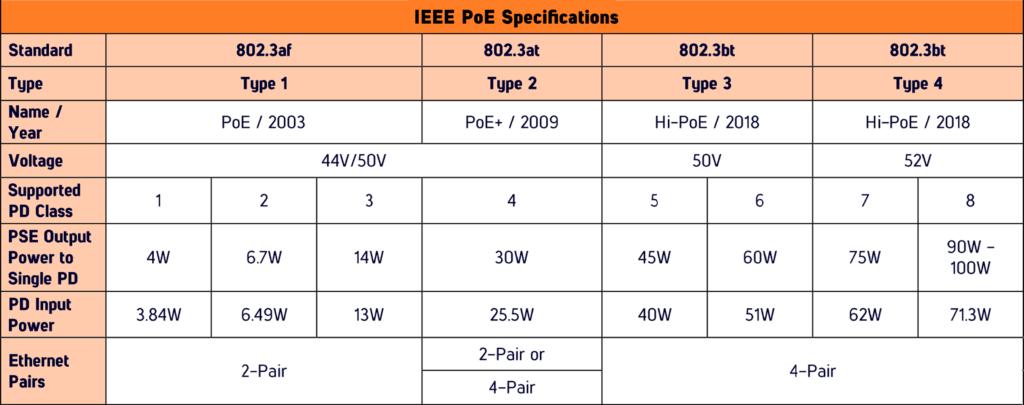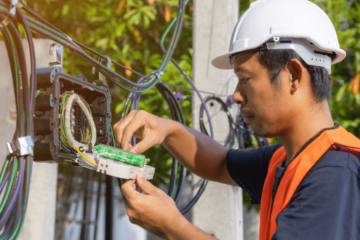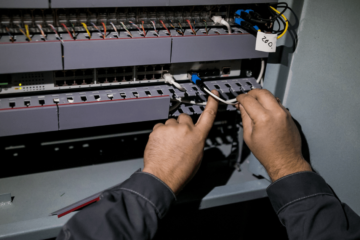
The unshielded twisted-pair cabling is the most common type of network cabling for workgroups and local area networks (LANs). For that reason, today, we are discussing some basics of these networks, explaining more about PoE standards and components.
What is PoE?
Power over Ethernet is the transmission of power in the same cable as the data signal. It has 3 basic components:
– A PSE (Power Sourcing Equipment) will deliver power to the cable
– The PD (Powered Device) that will use that power
– The cable that will transport the power
A typical PSE device is a switch with PoE capacity or a Power injector that intercepts the cable and adds the PoE.
The PD can be IP Phones, IP Cameras, Wireless access points (AP´s), etc. They are divided into classes, as shown in the table below.

Before using PoE, all the devices needed to be directly connected to a local electrical power outlet. In similar cases, this is very difficult or costly.
Imagine an IPTV camera that needs to be connected to the nearest telecommunications closet and to the nearest Powerboard. The problem is that most of the time, there are no power outlets nearby the Camera.
Types of PoE Switches
There are two types of PoE Switches: One, that operates with a power guaranteed per port and other, that is a total power budget.
Power guaranteed per port
The guaranteed per port means that is possible to connect as many PD class 3 as the ports that exist in the Switch. This kind of switches is more expensive, bigger in size and needs a controlled environment as they produce a lot of heat.
Total power budget
The total power budget means that it can only supply as many PD as the available power in the switch. A switch with 4 ports and 30W PoE means that it can support 4 PD class 2 or 2 PD class 3.
The PoE Standards
The PoE standards are defined by the Institute of Electrical and Electronics Engineering (IEEE).
In 2003, IEEE as created the first PoE standard – the 802.3af capable to supply 15,4W to the PD. But as the needs of the PD increased, was created the 802.3at standard, the PoE+ that can supply up to 30W to each PD.
As the PD’s kept constantly increasing its necessity for more power, the PoE+ was not enough anymore. Each equipment manufactured needed more and more power to support new mechanisms and features, but the standards didn’t follow this needs. Because of that, several competing technologies, like UPoE, 4PPoE, PoE++, UltraPoE, 4 Pair PoE, etc, were created however, these new technologies were not compatible with each other.
Until 802.3bt or PoE++ that could supply up to 60W per PD and Hi-PoE++ up to 100W per port. This new Standard was compatible with all the previous ones but not with the technologies created in the meantime, however all manufacturers adopted this new standard.
With this increase in power availability, it was created 4 new classes of PD´s.

Resuming all PoE Standards and capability:

This increase in power availability made possible several others features with High power needs like:
– POS systems for retail
– AP with high performance (IEEE 802.11ac & 802.11ax)
– High-definition Pan-Tilt-Zoom (PTZ) cameras with heaters for extreme environments
– Buildings (Led lighting)
– An endless number of IOT devises
As PoE uses the twisted pair cable it, has the same distance limits: 100mts









